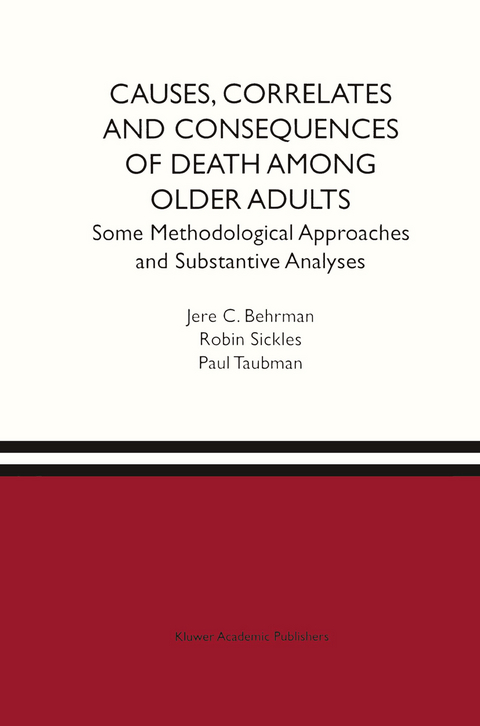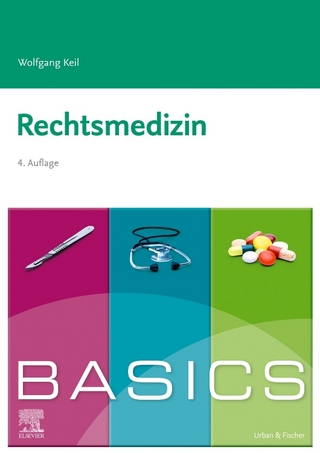
Causes, Correlates and Consequences of Death Among Older Adults
Springer (Verlag)
978-94-010-5887-2 (ISBN)
All humans eventually die, but life expectancies differ over time and among different demographic groups. Teasing out the various causes and correlates of death is a challenge, and it is one we take on in this book. A look at the data on mortality is both interesting and suggestive of some possible relationships. In 1900 life expectancies at birth were 46. 3 and 48. 3 years for men and women respectively, a gender differential of a bit less than 5 percent. Life expectancies for whites then were about 0. 3 years longer than that of the whole population, but life expectancies for blacks were only about 33 years for men and women. At age 65, the remaining life expectancies were about 12 and 11 years for whites and blacks respectively. Fifty years later, life expectancies at birth had grown to 66 and 71 years for males and females respectively. The percentage differential between the sexes was now almost up to 10 percent. The life expectancies of whites were about one year longer than that for the entire population. The big change was for blacks, whose life expectancy had grown to over 60 years with black females living about 5 percent longer than their male counterparts. At age 65 the remaining expected life had increased about two years with much larger percentage gains for blacks.
1 Introduction.- 1.1 General Categories of Causes of Differential Life Expectancies among Groups and Over Time: Genetics, Environment, and Behaviors.- 1.2 Why are the Causes, Correlates and Consequences of Death of Interest?.- 1.3 Concerns and Results of This Book.- 1.4 Methodology.- 1.5 Organization of This Book.- 2 The optimal choice of health and mortality.- 2.1 Previous Models.- 2.2 The Retirement History Survey and Variable Construction.- 2.3 New Estimates of Utility and Health Production Parameters.- 2.4 Conclusion.- Tables.- 3 Statistical techniques for estimation of hazard functions.- 3.1 Introduction to Hazard Models.- 3.2 Estimation of Survival Hazard Models with Heterogeneity.- 3.3 Monte Carlo Results.- Tables.- 4 Mortality hazard estimates from the dorn sample: smoking, occupational risks, birth cohort, functional form and frailty.- 4.1 Previous Mortality Studies.- 4.2 The Dorn Sample.- 4.3 Robustness of Estimates Over Time, Functional Form, and with Unobserved Heterogeneity.- 4.4 More Detailed Cohort Effects.- 4.5 Maximum Penalized Likelihood Estimators.- 4.6 Starting the Analysis Later.- 4.7 Conclusion.- Tables.- Figures.- 5 Mortality hazard estimates from the retirement history survey: education, pensions, and marital status and black-white and gender differences.- 5.1 Mortality and Hazard Function Results for Men.- 5.2 Black-White Mortality Inequalities for Males.- 5.3 Mortality Hazard Model for Women.- 5.4 Conclusion.- Tables.- Figures.- 6 Private rates of return on social security and their relation to mortality for groups defined by socioeconomic characteristics.- 6.1 Prior Research on Returns to Social Security System.- 6.2 Estimated Rates of Returns to Investments in Social Security.- 6.3 Analysis of RHS Data.- 6.4 Differences by Socioeconomic Characteristics.- 6.5 Results from Two Cohorts in the PSID.- 6.6 Conclusion.- Appendix 6.A Procedures Used for Calculating Mortality Adjusted Rates of Return from Social Security from RHS-SSA Data.- Tables.- 7 Conclusion.- References.- Author Index.
| Zusatzinfo | XV, 186 p. |
|---|---|
| Verlagsort | Dordrecht |
| Sprache | englisch |
| Maße | 155 x 235 mm |
| Themenwelt | Medizin / Pharmazie ► Medizinische Fachgebiete ► Geriatrie |
| Studium ► 2. Studienabschnitt (Klinik) ► Pathologie | |
| Sozialwissenschaften ► Soziologie ► Empirische Sozialforschung | |
| Wirtschaft ► Volkswirtschaftslehre ► Mikroökonomie | |
| Wirtschaft ► Volkswirtschaftslehre ► Ökonometrie | |
| Wirtschaft ► Volkswirtschaftslehre ► Wirtschaftspolitik | |
| ISBN-10 | 94-010-5887-3 / 9401058873 |
| ISBN-13 | 978-94-010-5887-2 / 9789401058872 |
| Zustand | Neuware |
| Informationen gemäß Produktsicherheitsverordnung (GPSR) | |
| Haben Sie eine Frage zum Produkt? |
aus dem Bereich


